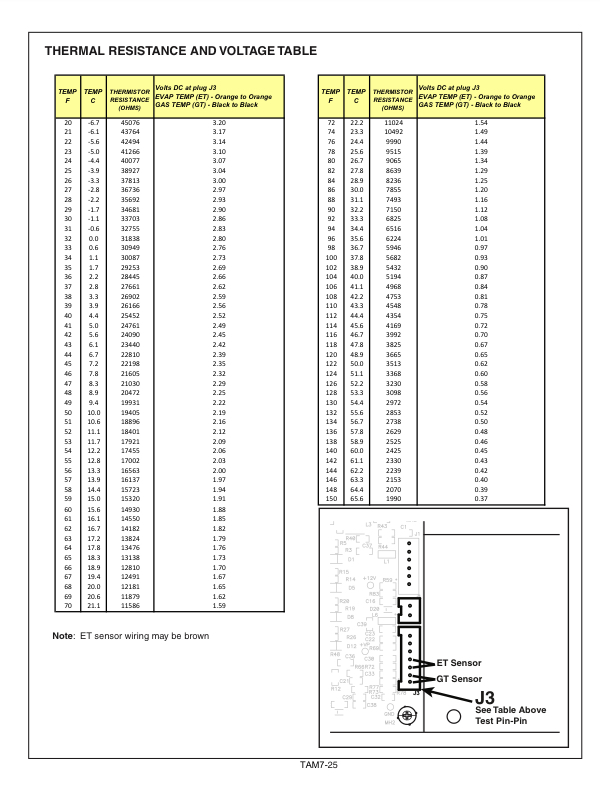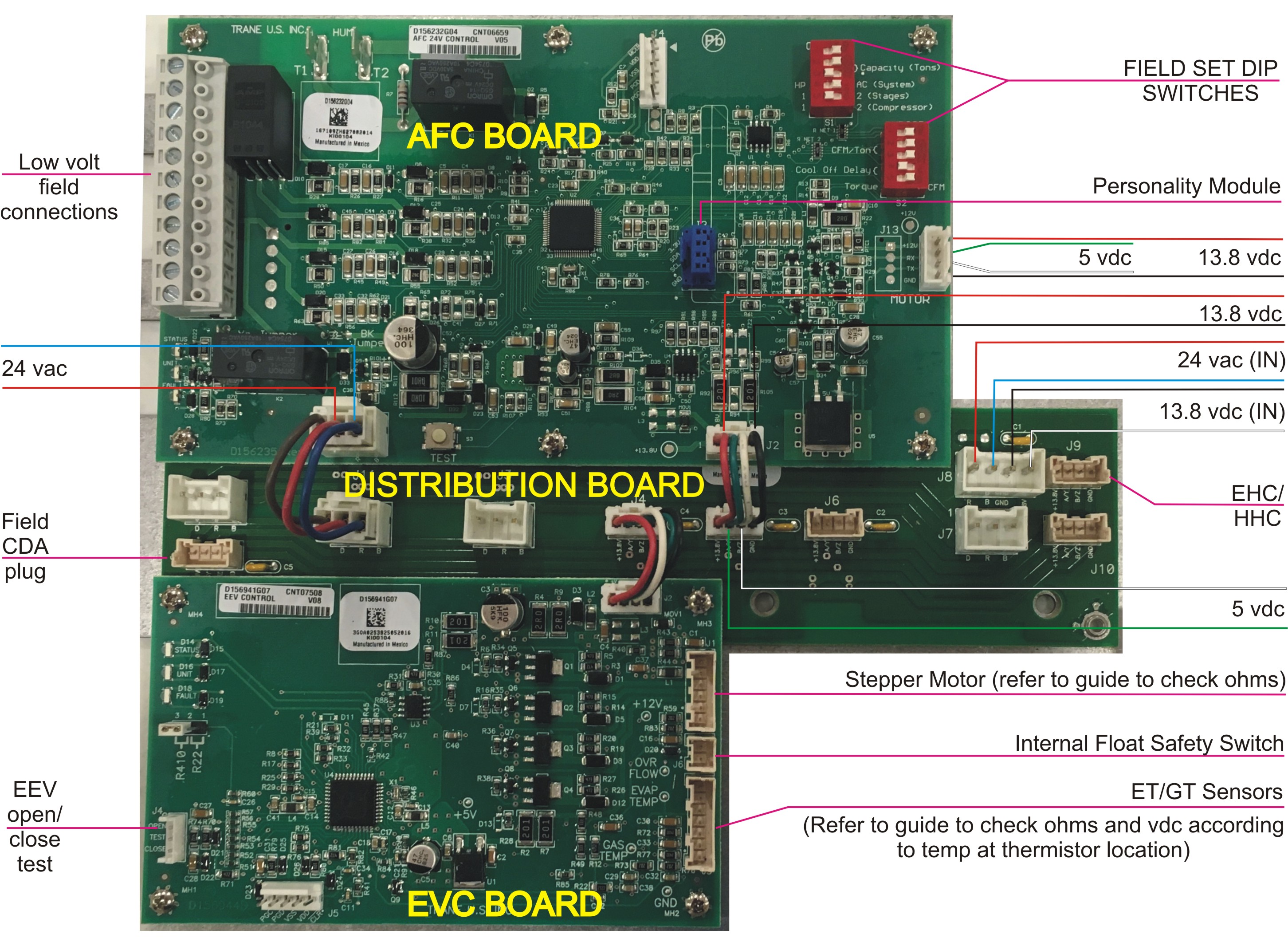Get Tech Tips
Subscribe to free tech tips.
Hyperion Troubleshooting

This article was written by my good buddy, Bill Frisbie. Bill is a service manager and crack technician at AirFx, a Trane dealer in lovely Inverness, Florida. Thanks, Bill!
One of the most intimidating things in the field is to walk up to a piece of equipment that you have either never worked on or just don’t understand. One of the most misdiagnosed systems is the Trane Hyperion air handler, specifically the Tam7 or Aam7 (American Standard). The most common issue they've had is the sensors that connect to the EVC board. One attaches to the suction line, much like a sensing bulb, and the other is after the EEV and entering the coil. The black lead goes to the gas sensor (suction), and the orange goes to the ET sensor (coil entering.)
In order for the system to function correctly, these sensors must be able to read those temperatures accurately, and there is a chart that helps us check those values on site.

Another common fault has to do with the way the float safety is tied into the system. When the float trips (opens), the loss of voltage should occur between the thermostat and Y1 before entering the board; if you break the circuit between the board and the condenser, the condenser will not run. However, the EVC does not know that the outside is not running. The EVC continues to monitor evaporator temperatures; it thinks that the superheat is incorrect and can cause a fault. To fix this, simply confirm that the wiring is correct, and of course, make sure the drain is clear.
The system also has test pins located at the bottom front of the EVC board. You can test open and closed to make sure the stepper motor is working. Although they can be bad or plugged, it has been very rare to have a bad EEV valve body, in my personal experience. Our company installs 10-12 systems per week on average, and I’ve replaced 2 in 7 years.
As far as the actual EVC board goes, I may have personally changed 5 of them in 7 years. There is also a chart to check the stepper motor, and it can tell you if it’s bad, but that’s also pretty rare.
A more common issue would be the wire harness that connects the board to the coil. I’ve had several where the harness has a wire that does not make contact through the plug, or an installer has drilled in a bad area to attach something to the cabinet and damaged the wire buried between the inner and outer panel. One fairly common issue is also having the DC voltage control fail. It's located left of the door switches, and it has 240v entering and 13.8 VDC leaving to the AFC board. However, every failure I've seen was because a bug crawled between the plate and board, causing a short.
I’ve come up with a simple image that our technicians have as a resource on-site to confirm that the boards have communication and control voltage where it needs to be.

Included is a PDF of the Tam7 service facts sheet that can help as a guide to help with troubleshooting in the field. Once you get the hang of it, it's really a solid piece of equipment, and it's fairly easy to repair.
—Bill











Comments
To leave a comment, you need to log in.
Log In